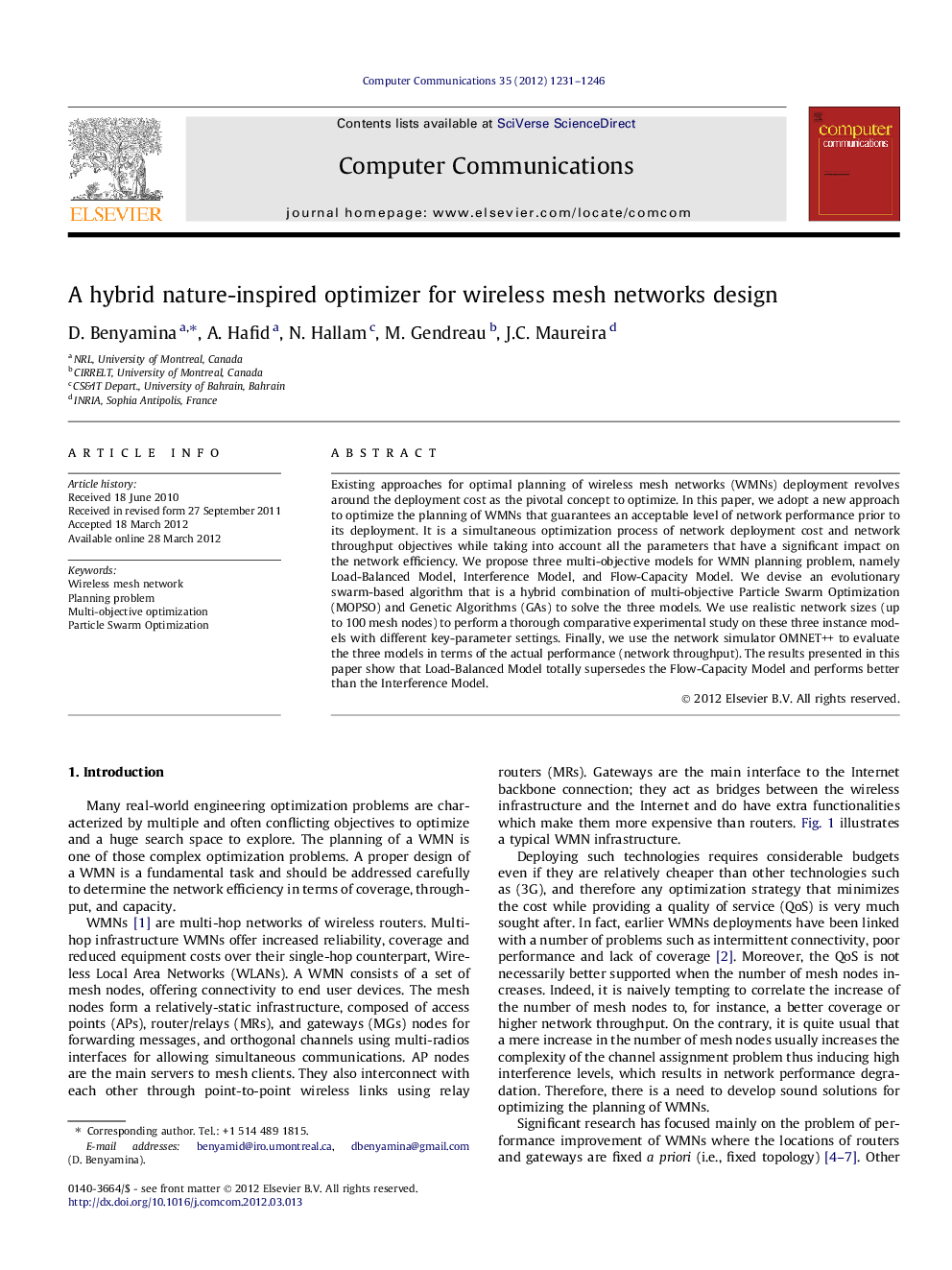| کد مقاله | کد نشریه | سال انتشار | مقاله انگلیسی | نسخه تمام متن |
|---|---|---|---|---|
| 448567 | 693581 | 2012 | 16 صفحه PDF | دانلود رایگان |

Existing approaches for optimal planning of wireless mesh networks (WMNs) deployment revolves around the deployment cost as the pivotal concept to optimize. In this paper, we adopt a new approach to optimize the planning of WMNs that guarantees an acceptable level of network performance prior to its deployment. It is a simultaneous optimization process of network deployment cost and network throughput objectives while taking into account all the parameters that have a significant impact on the network efficiency. We propose three multi-objective models for WMN planning problem, namely Load-Balanced Model, Interference Model, and Flow-Capacity Model. We devise an evolutionary swarm-based algorithm that is a hybrid combination of multi-objective Particle Swarm Optimization (MOPSO) and Genetic Algorithms (GAs) to solve the three models. We use realistic network sizes (up to 100 mesh nodes) to perform a thorough comparative experimental study on these three instance models with different key-parameter settings. Finally, we use the network simulator OMNET++ to evaluate the three models in terms of the actual performance (network throughput). The results presented in this paper show that Load-Balanced Model totally supersedes the Flow-Capacity Model and performs better than the Interference Model.
Journal: Computer Communications - Volume 35, Issue 10, 1 June 2012, Pages 1231–1246